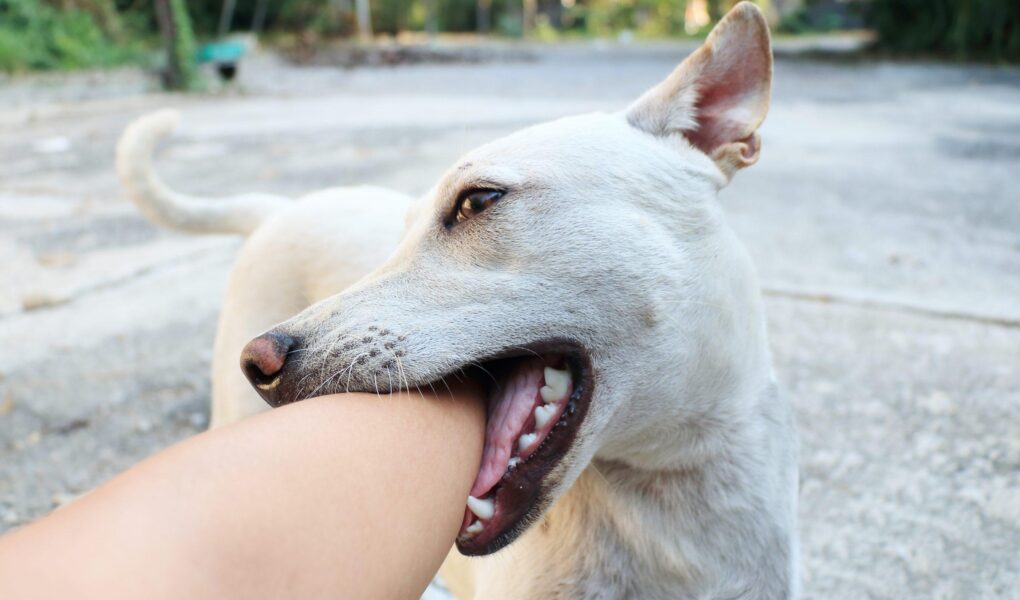Stop Dog Biting: Understanding and Addressing Canine Nipping
When it comes to our furry companions, the bond we share is often both profound and playful. However, beneath those wagging tails and wide-eyed expressions, some dogs struggle with behaviors that can put a damper on the joy they bring—one of the most concerning being biting. Whether it’s a playful nip during a game of tug or a more serious incident of aggression, dog biting can leave owners feeling anxious and uncertain. Understanding the underlying reasons for this behavior is the first step towards fostering a safe and harmonious environment for both pets and people alike. In this article, we will explore the common causes of dog biting, effective prevention strategies, and practical solutions to help transform your canine companion into a reliable friend that you can trust—tail wags and all.
Table of Contents
- Understanding the Root Causes of Dog Biting Behavior
- Essential Training Techniques to Curb Aggression
- Promoting Positive Interactions Through Socialization
- Creating a Safe Environment for Your Dog and Others
- Q&A
- In Retrospect
Understanding the Root Causes of Dog Biting Behavior
Understanding why dogs bite is crucial in preventing such behavior. Several factors can contribute to a dog feeling threatened or defensive, leading to a bite. Common reasons include:
- Fear: Dogs may bite when they perceive a threat, whether real or imagined.
- Protectiveness: Dogs are naturally protective of their owners and territory, which can trigger aggressive responses.
- Pain or Discomfort: A dog in pain may lash out when approached, especially by unfamiliar people.
- Lack of Socialization: Dogs that haven’t been properly socialized may struggle with appropriate interactions.
To effectively address biting behavior, it’s vital to identify specific triggers and patterns. This understanding can inform proper training and intervention. Consider the following table outlining the typical triggers and recommended responses:
| Trigger | Recommended Response |
|---|---|
| Strangers Approaching | Gradual desensitization through positive reinforcement. |
| Sudden Loud Noises | Creating a safe space and using soft, calming sounds. |
| Seeing Other Animals | Controlled introductions and observing body language. |
| Physical Pain or Injury | Consulting a veterinarian for appropriate care and treatment. |
Essential Training Techniques to Curb Aggression
Managing canine aggression requires a combination of patience, understanding, and effective training techniques. One of the cornerstones of curbing aggressive behaviors is to establish a positive reinforcement approach. This method involves rewarding your dog for displaying calm and friendly behavior, which encourages them to repeat those actions in the future. By using treats, praise, or playtime as incentives, owners can create a more obedient dog that associates good behavior with positive outcomes. Here are some essential techniques to incorporate into your training routine:
- Socialization: Introduce your dog to a variety of people, environments, and other pets to reduce fear and build confidence.
- Desensitization: Gradually expose your dog to triggers that provoke aggressive responses, while ensuring they remain calm, to lessen their intensity over time.
- Impulse Control: Practice commands like “sit,” “stay,” and “leave it” to help your dog learn to manage their impulses.
Additionally, consistent training sessions focusing on calming techniques can effectively manage a dog’s aggressive tendencies. Tools such as the “Look at That” game can redirect your dog’s attention away from perceived threats by encouraging them to focus on you instead. It’s also vital to maintain a structured routine, as predictability in daily life helps reduce anxiety, which can often manifest as aggression. Incorporate these strategies into a training schedule to track your dog’s progress:
| Week | Focus Area | Activities |
|---|---|---|
| 1 | Socialization | Meet new dogs, visit parks |
| 2 | Desensitization | Expose to common triggers at a distance |
| 3 | Impulse Control | Practice basic commands during walks |
| 4 | Calming Techniques | Incorporate relaxation exercises |
Promoting Positive Interactions Through Socialization
Creating an environment where dogs can safely socialize with other animals and people is crucial to preventing unwanted behaviors such as biting. Positive interactions during these early encounters can shape their future experiences and reactions. Consider implementing structured playdates with well-mannered dogs to teach your pet about boundaries and proper play behavior. Engaging in group training classes can also provide a productive space for dogs to learn commands while becoming accustomed to other dogs and their handlers. These experiences encourage them to develop social skills in a controlled manner, reinforcing good habits over time.
In addition to structured interactions, daily routines can also play a role in promoting positive behaviors. Ensure your dog is exposed to various environments, sounds, and people, reinforcing confidence in unfamiliar situations. Regular walks in diverse neighborhoods expose them to different stimuli, while outings to dog parks foster an understanding of canine body language. Consider the following tips for enhancing your dog’s social experience:
- Frequent socialization outings: Visit parks or busy streets where they can observe and interact with different dogs and people.
- Positive reinforcement: Reward calm behavior with treats and praise to encourage ongoing good interactions.
- Puppy classes: Enroll in classes that focus on social skills and obedience.
Creating a Safe Environment for Your Dog and Others
Creating a safe environment for your dog is crucial in preventing aggressive behavior and ensuring the well-being of both your furry friend and those around you. Start by establishing a designated space where your dog can feel secure and relaxed. This area should include their bed, toys, and access to water, away from high-traffic zones where they might feel anxious or threatened. Additionally, consider these essential practices:
- Use baby gates to limit access to certain areas of the home.
- Provide positive reinforcement training whenever your dog behaves calmly in social situations.
- Socialize your dog with other pets and people gradually, ensuring each experience is positive.
Monitoring your dog’s interactions can also play a key role in creating a peaceful environment. Always supervise playdates and be vigilant for signs of stress or discomfort. If you’re ever unsure about their behavior, consult a professional trainer or behaviorist. Here’s a simple table to help you identify common signs of anxiety in dogs:
| Behavior | Potential Cause |
|---|---|
| Excessive barking | Frustration or fear of unfamiliar situations |
| Tail tucked between legs | Indication of anxiety or submission |
| Excessive licking | Self-soothing behavior due to stress |
Q&A
Q&A: Tackling Dog Biting – Understanding and Prevention
Q: Why do dogs bite?
A: Dogs may bite for a variety of reasons. Fear, protection, pain, and territorial instincts often drive them to act aggressively. It’s essential to recognize that biting is a form of communication for dogs; they may feel threatened or anxious in certain situations. Understanding your dog’s body language can help prevent incidents before they occur.
Q: At what age do dogs typically start to exhibit biting behavior?
A: Puppies naturally explore the world with their mouths. Biting behavior is most common during their teething phase, usually between 3 to 6 months of age. However, if biting persists as they mature, it can indicate behavioral issues that may need addressing through training or socialization.
Q: How can I differentiate between playful nipping and aggressive biting?
A: Playful nipping is typically gentle and accompanied by other playful behaviors, such as wagging tails and excited barks. Aggressive biting, in contrast, is usually characterized by stiff body posture, growling, and a lack of other playful cues. If your dog’s biting causes pain or fear, it’s important to intervene and seek guidance.
Q: What are some effective strategies to stop dog biting?
A:
- Redirect Attention: Offer a toy or chew item whenever the dog seems inclined to bite. This helps redirect their chewing instincts to a more appropriate target.
- Use Commands: Teach commands like “leave it” or “no” in a firm, calm voice to help establish boundaries.
- Teach Bite Inhibition: When playing with your dog, allow a gentle nip but immediately stop play if they bite too hard. This teaches them to control their bite strength.
- Socialization: Regularly expose your dog to new experiences, environments, and other dogs. Proper socialization helps your dog learn appropriate play behavior.
Q: What role does training play in preventing bites?
A: Training is essential in preventing biting behavior. It helps establish clear communication between you and your dog. Basic obedience commands, such as “sit,” “stay,” and “come,” facilitate a better understanding of expectations. Consider enrolling your dog in a training class, where they can learn alongside others in a controlled environment.
Q: When should I consult a professional about my dog’s biting behavior?
A: If your dog’s biting seems aggressive or if you feel uncertain about how to manage the behavior, consulting a professional dog trainer or animal behaviorist is advisable. They can assess the situation and provide tailored strategies to improve your dog’s behavior. It’s better to seek help sooner rather than later to prevent the issue from escalating.
Q: Can certain dog breeds be more prone to biting?
A: While any dog can bite, certain breeds may have tendencies based on their genetic makeup or traditional roles (e.g., protection or herding). However, it’s crucial to remember that individual temperament, upbringing, and environment largely shape a dog’s behavior. Responsible ownership, socialization, and training are key factors in mitigating biting tendencies, regardless of breed.
Q: What should I do immediately after a biting incident?
A: Remain calm and assess the situation. If someone is injured, seek medical attention promptly. Avoid scolding your dog harshly, as this can escalate fear or aggression. Instead, reflect on what might have triggered the bite and consider how to prevent future occurrences. Documenting the incident can also be helpful if you seek professional advice later.
Q: Is it ever too late to train an older dog not to bite?
A: It’s never too late to train a dog. While it may require more patience and consistent effort, older dogs can learn new behaviors. Positive reinforcement techniques, patience, and professional help can significantly improve their behavior over time.
By understanding the motivations behind dog biting and implementing effective training strategies, you can foster a safer and more harmonious relationship with your furry friend.
In Retrospect
addressing the issue of dog biting is a multifaceted endeavor that requires patience, understanding, and a proactive approach. By recognizing the signs of anxiety or fear in our furry companions and employing effective training techniques, we can foster a safer environment for both dogs and humans. Remember, it’s not just about stopping the behavior; it’s about nurturing trust, building confidence, and strengthening the bond we share with our canine friends. As we embark on this journey of awareness and education together, let’s strive to create a community where every wagging tail is a symbol of joy, safety, and mutual respect. After all, a well-trained dog is a happy dog — and a happy dog makes for a happier home.



